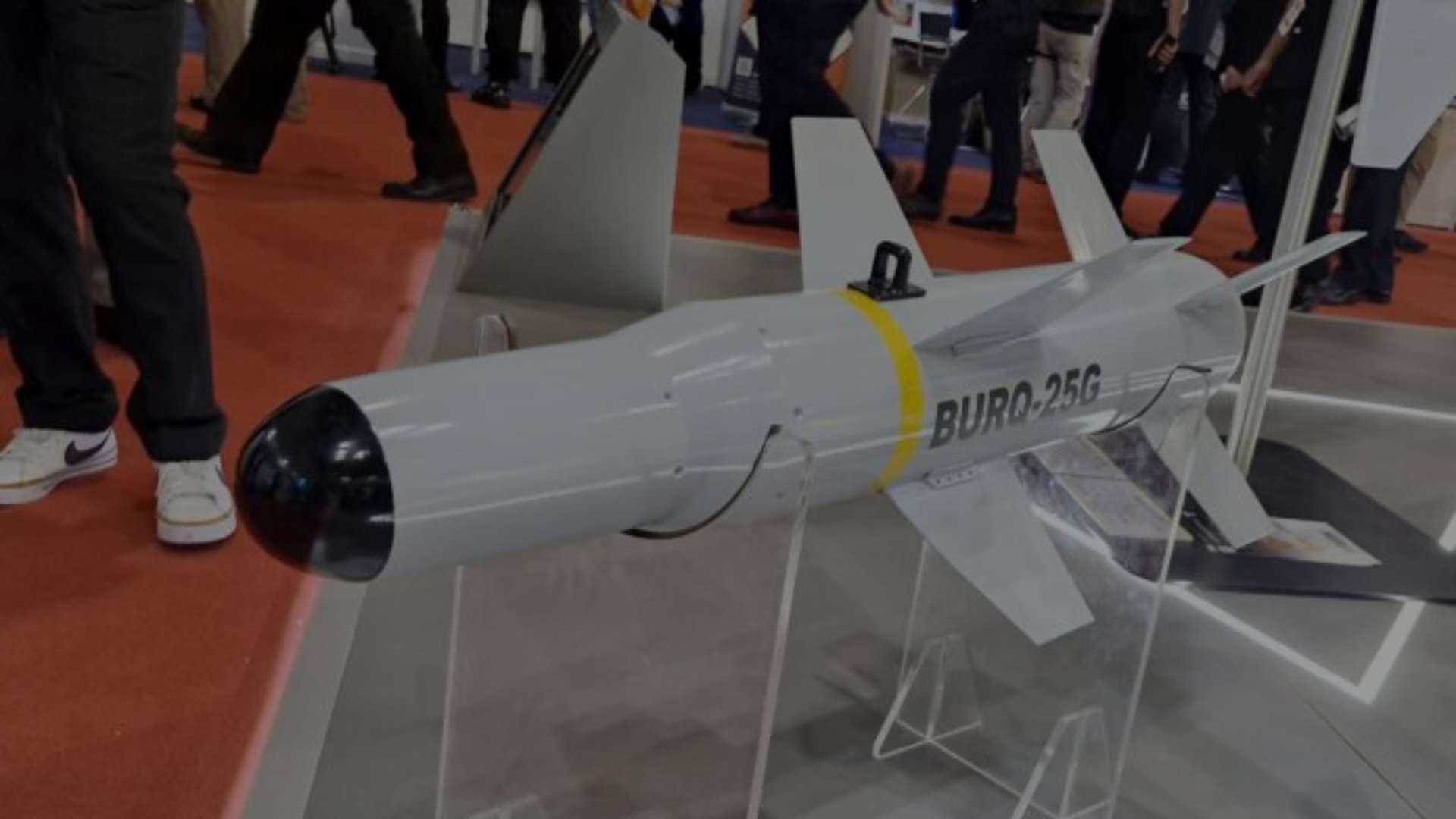4463Views

New Air-Launched Munitions Are a Key Piece of Pakistan’s Drone Program
Bilal Khan
Founder of Quwa, Bilal has been researching Pakistani defence industry and security issues for over 15 years. His work has been cited by Pakistan's National Defence University (NDU), the Council of Foreign Relations, Bulletin of Atomic Scientists, Centre of Airpower Studies and many others. He has a Hons. B.A in Political Science and Masters of Interntional Public Policy from Wilfrid Laurier University in Waterloo, Ontario, Canada.
While its flagship cruise missile programs – namely, the Taimur air-launched cruise missile (ALCM) and the Harbah anti-ship cruising missile (ASCM) – are drawing attention, Pakistan’s precision air-launched munitions portfolio is growing through the development of smaller systems.
For example, Global Industrial and Defence Solutions (GIDS) recently revealed several new additions to its BURQ family of air-to-surface missiles (ASM) at DSA 2024, which took place in Malaysia earlier in the month of May. In parallel, the National Aerospace Science and Technology Park (NASTP) is developing a miniature ALCM by the name of KaGeM V3 in collaboration with Turkiye’s Baykar Group.
The development of these small-sized air-launched munitions reflects a wider focus across the Pakistani military to leverage unmanned aerial vehicles (UAV) to expand its air surveillance and attack coverages in lieu of additional crewed aircraft. This is not to suggest that Pakistan will not acquire new crewed combat and special mission aircraft; rather, the expansion or net-growth of Pakistani airpower will likely be driven by new drones of a wide variety of sizes and capabilities.
Thus, the development of the BURQ, KaGeM V3, and others should be viewed in light of a broader set of investments, especially in space-based assets – such as satellite communications (SATCOM) and satellite navigation (SATNAV) – and proprietary data-link systems. The new air-launched munitions are a piece of a wider effort in Pakistan of advancing a robust and far-reaching drone program.
New Air-Launched Munitions on the Horizon
GIDS BURQ-Series
Representing Pakistan’s state-owned Strategic Plans Division (SPD) entities in the commercial field, GIDS recently revealed new additions to its BURQ family of ASMs: the BURQ-45P, BURQ-50P, and BURQ-25G.
The BURQ-45P is reportedly in production. It has a total mass of around 45 kg, which is comparable to a number of anti-tank guided missile (ATGM) platforms on the market. The missile offers a range of up to 12 km with an accuracy of under 1.5 m CEP. It leverages a semi-active laser-homing (SALH) seeker, while its 10 kg warhead capacity can be configured with either blast fragmentation or thermobaric payloads.
The BURQ-50P is reportedly under qualification or testing. It will have a total mass of around 50 kg and will offer a range of up to 15 km. But in comparison to the BURQ-45P, the BURQ-50P will reportedly have double the warhead size at 20 kg. The warhead can be configured with a blast-fragmentation, anti-armour, or a thermobaric payload. The BURQ-50P’s guidance system leverages a satellite-aided inertial navigation (INS/GPS) suite plus configurable SALH seekers.
Finally, there is a BURQ-25G under development. This will be the smallest member of the BURQ family by weighing around 25 kg. It will leverage a 8 kg blast fragmentation warhead. It will offer a range of up to 14 km and use a SALH-based guidance system.
Pakistan’s SPD developed the BURQ-series of ASMs to arm the NESCOM Shahpar-2 Block-2 and future Shahpar-3 UAVs. With GIDS promoting Pakistani UAVs, there is clear value in also offering the munitions as well. It helps GIDS package more goods into a deal and assure customers that they could acquire the complete capability set without worrying about third-party interference in the supply chain. GIDS can offer the end-to-end suite consisting of the UAV as well as its command-and-control (C2) system, line-of-sight (LoS)-ranged data-link, and a growing portfolio of compatible munitions.
However, with each of Pakistan’s service arms (i.e., Army, Navy, and Air Force) working to grow their UAV fleets, producing the munitions stack is also economically sensible. Basically, a large drone fleet will need a large number of munitions. It is not feasible for Pakistan to import such munitions in large numbers over the long-term, especially as it depletes its stores through use or seeks to restore existing stocks.
NASTP-Baykar KaGeM V3
The KaGeM V3 seems to be a joint-venture between the Pakistan Air Force (PAF)-backed NASTP and the Turkish defence contractor Baykar Group. In 2023, Baykar Group announced that it will carry out research and development (R&D) work at NASTP’s facilities.
A design mock up shown at NASTP reveals that the KaGeM V3 is a miniature ALCM. For example, it has an air-breathing engine and a single-piece horizontal wing. Neither Baykar Group or NASTP revealed the official specifications of the KaGeM V3. However, Baykar Group recently tested a similar miniature ALCM called the KEMANKEŞ 2. The KEMANKEŞ 2 offers a range of 200 km and endurance of 60 minutes. The ALCM can carry a 20 kg warhead and has a total mass of 70 kg.
Miniature ALCMs like the KaGeM V3 and KEMANKEŞ 2 leverage much lighter warheads than their larger counterparts, like the Taimur ALCM. The basic rationale is that while the munitions payload is lightweight, the smart munition is supposed to leverage survivability and accuracy to create an effect. Moreover, these small munitions are not designed to destroy fortified positions or large targets. Instead, one would use the miniature ALCM to engage inherently fragile high-value targets that do not necessitate large warheads. A good example would be an enemy radar site, or potentially even a missile launcher, among others.
End of excerpt (847/1778 words)
Log in or subscribe to read the rest of the article
Note: Logged in members may need to refresh the article page to see the article.


